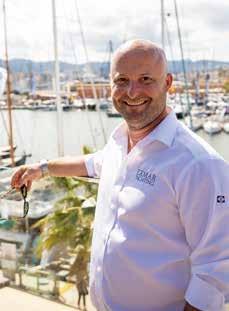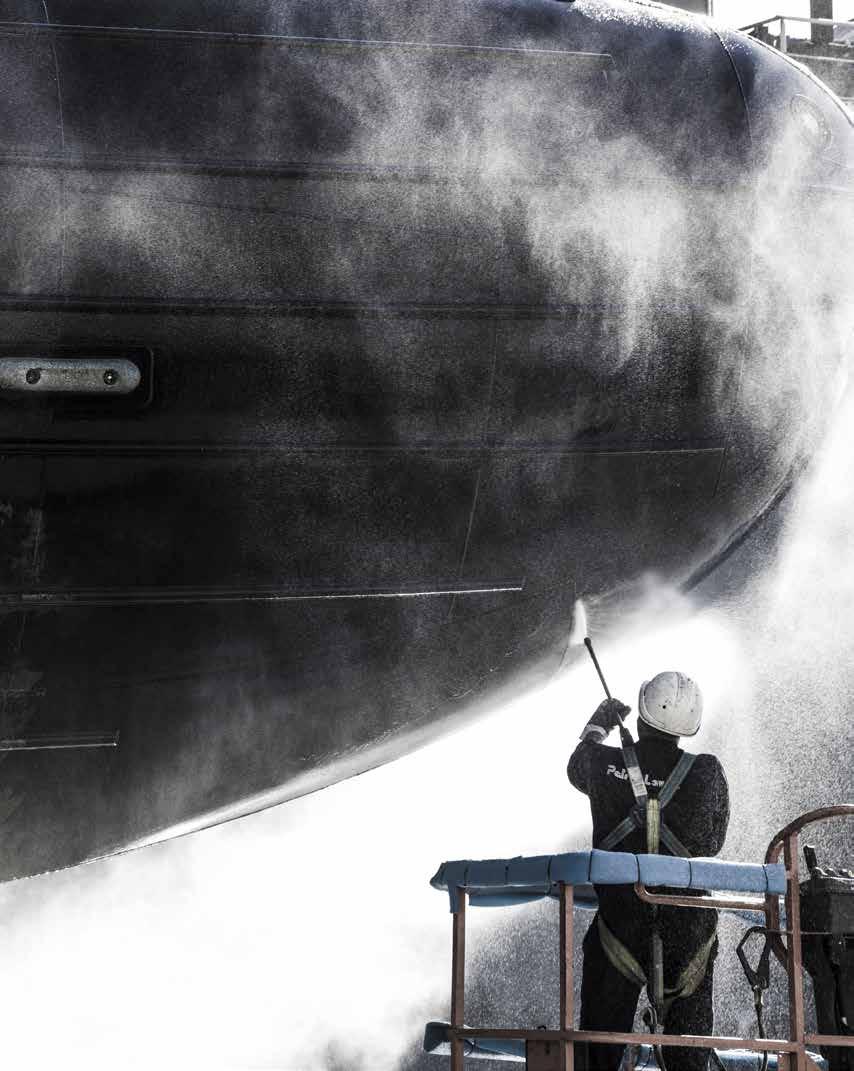
5 minute read
When ‘praying for the best’ is not always best
Forward planning in the refit process
Xavier Ex, business unit manager yachting at EXMAR Yachting, shares his thoughts on the need for the refit survey after completing a project in Seychelles.
BY JACK HOGAN
Forward planning and streamlining the overall refit process is a vital topic, and one discussed extensively at YARE and The Superyacht Captains Forum 2021. Efficient use of the yacht’s time and maximising the refit process are paramount, but the twin factors of time and cost seem to work against each other.
Busy yachts cannot commit early and, equally, busy yards may find that the quotation process and eventual inaccuracies leave the owner with a bad taste in the mouth after the refit is complete.
The loss of data accrued by a vessel over its lifecycle is a major sticking point – collecting and disseminating the data as needed, regardless of the crew changeovers, reflagging or change of ownership. This was also a key discussion point at the RINA breakaway session at The Superyacht Forum Live 2021.
Discerning who actually owns this data, and in what way it can be used, is an ongoing debate. Adding a refit survey is another dimension to the refit cycle, and it comes with its own considerations.
Having a refit survey is an obvious benefit for forward planning and efficiency. Commercial ships count every minute they are in dry dock as profits lost and this approach is at odds with
Xavier Ex, BU manager yachting, EXMAR Yachting. the frequently drawn-out ‘let’s pray for the best’ attitude that undermines some superyacht refit projects.
Professional yards have systems in place to make the most of the refit period, and it’s in their best interests to maximise the number of projects they can fit into a busy winter, but can yachts and management do more to streamline the process?
Xavier Ex, business unit manager yachting at EXMAR Yachting, says, “I met Rory Marshall [Superyacht Paint Consultant] at YARE in 2018, who then introduced me to Alex Fassbender from Optimar. There, we discussed how it would be interesting to develop a more hands-on approach from the owners and managers to the refit and painting process.”
Referring specifically his the most recent project, the 42m sailing yacht Douce France, where the paint was the priority, Ex further elaborates the rationale behind completing the survey. “Most shipyards will say ‘we have our painters’ [who are usually contractors], and by the time they are looking at the project, often the pricing has only been ballparked in advance and the extra costs start creeping in.”
The EXMAR Yachting representatives, along with Fassbender and a rep-

42m S/Y Douce France.
resentative from the NAUTECH Group Shipyard, flew out to meet the yacht in the Seychelles to conduct a three-day refit survey and pre-paint assessment.
“From a management perspective, we are always encouraging crew to supply work lists well in advance,” says Ex. “Of course, we understand that these are dynamic situations and the scope of work will evolve, but we try to look at the big picture and get the crew involved early. By then, having consultants on board who can also communicate directly with the shipyard helps create the most accurate scope of works, and we will then have the detailed report on file. In this case, the paintworks chapter of the report is 21 pages long.
“The ideal situation is when you build and commission the vessel for a client and manage it from day one, following up with all maintenance, Class and Flag surveys. This makes it very easy. All of the vessel’s history and data is available and your PMS system is up to date. But it does not often happen like that. The difficulty comes when there are gaps in data from the lifecycle.” When these gaps appear is when Ex believes pre-refit surveys become even more important to avoid spiralling costs and time constraints.
One potential solution is to integrate third-party software as a conduit between the different stakeholders. The dreaded Excel spreadsheet elicits strong memories of never-ending tabs and easily misplaced decimal points. However, Ex still sees value in centralising and keeping things relatively traditional.
“An Excel spreadsheet is something universal, and it takes time to build properly. But having all the other contractors and supplies integrated creates an information hub. Shipyards will use their own software and will be unlikely to change because a vessel has something different. In order to avoid the different parties working off different systems, I don’t think having a thirdparty software in-between is the answer in the short to medium term.”
Fitting a refit survey into an already busy schedule is one barrier to entry; the other is cost and whose responsibility it is to cover. The hypothesis that the vessel will save €75,000 on a refit versus the €15,000 that the survey will cost is an oversimplification. The reality is that, as Ex explains, in all likelihood the quote may actually match the estimation. The differentiation is that the scope is unlikely to grow and the time frame can be communicated with relative assuredness.
The cost upfront is significant, as Ex explains. “Including travel, we spent a full week on this survey, plus the time the crew spent showing us around and providing information. You do need to invest time and, of course, who’s going to pay for that? That depends on your discussion and negotiation with the yard, the subcontractors, the surveyors and the owner.”
In conclusion, Ex stresses that these costs are offset in the long run for their clients and that, as asset managers for the yachts they represent, refit surveys are the most efficient solution to effectively refitting a superyacht. JH
Refit & Repair


www.lusben.com
SEVEN ICONIC REFITS
The refit market is barely recognisable from where it was even just a decade ago. Yachts can be completely gutted or even rebuilt. Here we reveal the fascinating stories behind some of the biggest – and most notable – refit projects over the past few years.










